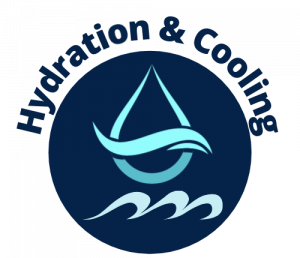Discover the critical components of an effective football hydration system that can elevate your team’s performance. From tanks to dispensers, learn what features matter most.
_______________________________
Hydration Station Components: Essential Features for Football Team Success
When it comes to football performance, proper hydration isn’t just helpful—it’s essential. The right football hydration system can make the difference between a team that fades in the fourth quarter and one that finishes strong. At Hydration & Cooling, we’ve seen how the components of a hydration station directly impact player performance, recovery times, and overall team success. Let’s break down the critical elements that create an effective hydration system for your football program. An effective hydration system should include various football hydration station features, such as accessible dispensers, electrolyte-rich solutions, and temperature control to keep drinks at optimal levels. Additionally, regular monitoring and scheduling for hydration breaks during practices and games ensure that players maintain peak performance throughout the match. By prioritizing these elements, teams can enhance endurance and minimize the risk of dehydration-related injuries. An effective hydration system should incorporate both water and electrolyte solutions to ensure players are replenishing what they lose during intense training and games. Additionally, implementing football hydration tips for players can help them understand their individual hydration needs, promoting optimal performance throughout the season. By prioritizing hydration education and accessibility, teams can enhance their competitive edge on the field.
Water Tank Capacity: The Foundation of Team Hydration
The heart of any football hydration system is its water tank. Capacity requirements vary based on team size, practice duration, and climate conditions. For a typical high school football team of 40-60 players during a 2-3 hour practice in warm weather, a minimum 35-gallon tank provides the baseline. College and professional programs often require 100-gallon systems to meet the demands of larger rosters and longer training sessions.
What makes an effective water tank goes beyond just size. Look for tanks constructed from FDA-approved, food-grade polyethylene that can withstand UV exposure and repeated use. The best systems feature wide-mouth openings for easy filling and cleaning—a critical factor for maintaining sanitary conditions and preventing bacterial growth that could sideline your athletes.
Multiple Dispensing Points: Efficient Hydration Delivery
The number and configuration of drinking stations directly impact how quickly your team can hydrate during limited break times. Effective football hydration systems feature multiple dispensing points—typically 8-20 depending on team size—allowing several players to hydrate simultaneously without waiting in line.
Each dispensing point should include high-flow spigots or nozzles that deliver water quickly, reducing time spent at the station. The most advanced systems incorporate antimicrobial components at these contact points to minimize cross-contamination between players. For maximum efficiency, dispensing points should be positioned at varying heights to accommodate players of different sizes, from linemen to quarterbacks.
Mobility Features: Taking Hydration Where It’s Needed
Football practices often move between different fields or training areas, making mobility a crucial component of any hydration system. Heavy-duty pneumatic wheels capable of traversing various terrains—from artificial turf to natural grass and gravel pathways—ensure your hydration station can follow your team wherever they train.
The most effective systems include steering mechanisms and ergonomic handles designed to allow a single staff member to relocate the unit. Some advanced models feature integrated braking systems to secure the station during use, preventing movement or tipping when players access the water.
Cooling Integration: Beyond Basic Hydration
Modern football hydration systems go beyond simply providing water. Integrated cooling components maximize the physiological benefits of hydration by helping regulate core body temperature—particularly crucial during August two-a-days and early season games in hot weather.
Look for systems that incorporate insulation in the main tank to keep water cool throughout extended practices. Premium hydration stations feature dedicated ice compartments that chill water without diluting it as the ice melts. Some advanced models include built-in misting systems that provide immediate cooling relief while players hydrate, significantly enhancing recovery between drills and reducing heat-related risks.
Sanitation Features: Protecting Player Health
Often overlooked but critically important are the sanitation components of a football hydration system. Effective stations incorporate design elements that prevent contamination and facilitate thorough cleaning.
Smooth interior surfaces resist biofilm formation, while integrated drainage systems allow for complete emptying and drying between uses. UV-resistant materials prevent degradation that could lead to bacterial growth, and some advanced systems include built-in sanitizing capabilities. These features not only protect player health but also extend the lifespan of your investment.
Take Your Team’s Hydration to the Next Level
Your football program deserves a hydration system built specifically for the demands of the sport. At Hydration & Cooling, we specialize in creating customized solutions that incorporate all these essential components while meeting the specific needs of your team.
Contact our team today for a personalized consultation and discover how our innovative hydration solutions can help take your athletic program to new heights. When life gets hot, we do cool!
Request a Free Consultation Today
